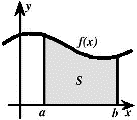Math in the Middle Institute Partnership

Department of Mathematics: Master of Arts in Teaching, Exam Expository Papers
Date of this Version
7-2007
Abstract
Large numbers are numbers that are significantly larger than those ordinarily used in everyday life, as defined by Wikipedia (2007). Large numbers typically refer to large positive integers, or more generally, large positive real numbers, but may also be used in other contexts. Very large numbers often occur in fields such as mathematics, cosmology, and cryptography. Sometimes people refer to numbers as being “astronomically large”. However, it is easy to mathematically define numbers that are much larger than those even in astronomy. We are familiar with the large magnitudes, such as million or billion. In mathematics, we may know a number as an approximation or as an exact amount; for example 531,441. This number could be called “half a million” but it is also the specific solution to the question “how many ways are there to color the 12 numerals on a clock face if you have three different colored markers?” (Contributed by Maria Pierce). You would compute this number as follows: you have 3 choices of color for each hour number 1,2,3,…,12. So there are 3 choices for 1; followed by 3 choices for 2; followed by 3 choices for 3; etc. This would give you 312= 531,441 number of choices.


Comments
In partial fulfillment of the requirements for the Master of Arts in Teaching with a Specialization in the Teaching of Middle Level Mathematics in the Department of Mathematics. Gordon Woodward, Advisor July 2007